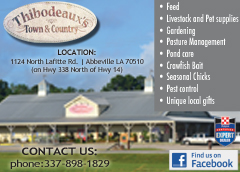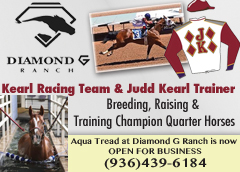Written by ANDREW J. LEWIS, DVM, DACVS
RED RIVER EQUINE HOSPITAL, LLC
Original Publish Date June 2013
Colic…the elephant in the room. Everybody knows about it, but no owner really ever wants to talk about it. Unfortunately, that leaves many people in the dark about what to expect if their horse has to be referred and hospitalized for colic issues. Many questions get asked and have to be answered, and this is usually in the middle of the night in stressful situations. That’s not really the time to be having to process all of the “what-if’s” that go along with dealing with colic, especially those cases that require surgery. This article will hopefully shed some light on many of these concerns, such as what is the diagnosis, what is the prognosis, what are the potential complications, how long before I can ride my horse again, and of course…what’s the cost??
AT THE FARM
Before you even walk in the door to our hospital, many times you have already had your horse evaluated by your primary care veterinarian. Most likely, he’s done the “typical colic workup” – take a baseline physical exam (take temperature, look at gum color and moisture, heart rate, respiratory rate, listen to gut sounds, etc), sedate the patient, pass a stomach tube to either administer laxatives or check for reflux (fluid buildup in the stomach), and perform the ever-popular rectal exam. At some point during the workup, the patient will most likely be administered Banamine (a popular NSAID used as an anti-inflammatory and pain reliever), and potentially other drugs such as Buscopan (a drug used to decrease spasms in the gut). The physical and rectal exams tell the practitioner many things regarding the general health and status of your horse at that time. Fevers can potentially point to cases of colic that are many times managed medically (such as anterior enteritis, colitis) but can be severe and costly despite not needing surgery. Heart rates in many mild cases of colic that never require hospitalization and respond to a dose of banamine are typically low. High heart rates usually indicate pain and potentially dehydration. Gum color and moisture are also important to evaluate to give veterinarians a rough estimate of the degree of dehydration present.
Gut sounds are evaluated in four general quadrants of the abdomen – upper left, lower left, upper right, and lower right. Veterinarians use these locations to determine if there is any movement in the GI tract, and will typically tell you that sounds are either absent, decreased, normal, or increased. Probably the most important part of the colic workup in the field is the rectal examination. This may or may not give the veterinarian an idea of what is actually going on. Large colon impactions can typically be felt very easily, and can certainly be treated many times on the farm with laxatives (Epsom salts and water, mineral oil, etc.), pain medications, and restricting access to food. Other abnormalities can be felt including colon displacements (the large colon is out of its normal location), large colon torsions (twist), small intestinal obstructions (blockages, twists, etc.), to name a few. We as veterinarians may not always be able to give an accurate diagnosis as to the exact problem the horse is suffering from, but the rectal exam can at least give us an idea as “hey guys, this is not normal, and I don’t know if I can fix this with the typical field remedies…we may need to send your horse to a hospital for further evaluation and potentially surgery”. This is never what any owner wants to hear, and not what your veterinarian wants to tell you, but unfortunately this needs to be addressed. If you choose to have your horse sent to a referral hospital, your veterinarian may opt to do additional treatments prior to shipping the patient (administer IV fluids, leave a stomach tube indwelling, administer additional sedation/pain meds, and at times send you with additional sedative drugs for you to administer during the trailer ride depending on how painful your horse is) – this may depend on how far away a referral hospital is from your location.
AT THE HOSPITAL
Once you arrive at the hospital, the exam that was performed in the field will most likely be performed again. You would be surprised how quickly vital signs, rectal exam findings, etc. can change in a relatively short period of time. A full physical exam will be performed, the rectal exam will be repeated, routine bloodwork (Complete Blood Count, Chemistry Panel, Fibrinogen, Blood Gas and Electrolytes) may be performed as well to assess level of dehydration, determine if there is an infectious component, and assess liver/kidney function, among other things. If a stomach tube is still in the patient, we will use it to determine the amount, color, consistency, and odor of gastric reflux (if any). If the horse was not shipped with a tube, we will pass one. This will aid us in determining if this is a small intestinal blockage or an infectious process such as anterior enteritis (think of a severe stomach bug). It also helps determine the severity and sometimes the duration of the problem.
As previously mentioned, the rectal exam is a vital component of the colic workup and this will be performed again upon arrival to the hospital. At times, the rectal exam can be completely normal when your veterinarian performs it at the farm, but by the time your horse has reached a hospital, this could very well have changed and may shed further light as to what is going on. Additional diagnostics that are commonly performed include a complete ultrasound examination of the abdomen. This can aid many times in determining what part of the intestine is affected (small intestine vs. large intestine), viability of the intestine (thickened bowel that is dilated and not moving could indicate there is intestine that may not be alive), amount of free fluid in the abdominal cavity, presence of a large amount of fluid in the colon (could indicate an impending case of diarrhea), among other things. Additionally an abdominocentesis, aka “Belly Tap”, may also be performed. This is done to get a sample of abdominal fluid (the fluid that surrounds the intestines, but is not in the intestines). The fluid can help us determine the general health of the intestine (is it alive and healthy, inflamed, or is there dead intestine); infection in the abdomen (peritonitis) may also be identified. One thing we always tell owners is that we sometimes don’t always get a fluid sample, and that there is a low risk of accidentally puncturing the gut (many times this does not cause any major issues, but could potentially).
During the workup, a IV catheter will be placed, which allow us to administer intravenous fluids and electrolytes, as well as various medications that may be needed. After the entire colic exam is completed, the patient will typically be put in a stall to be monitored. Some times the patient will be so painful, and the diagnosis so blatantly obvious, that we may recommend colic surgery immediately. Unfortunately, sometimes we may recommend humane euthanasia rather quickly if the condition of a horse is very grave.
Many times, we may not be able to give you a complete diagnosis prior to surgery. In other words, we may know based on all of the diagnostics performed that a horse could have dead small intestine, but we may not be able to tell you the exact location in the small intestine (remember, horses have roughly 70 feet of small intestine), how much of the intestine is affected (one foot vs. 20 feet). That being said, we will typically know when we need to intervene surgically. Once we have performed the initial exploratory component of the surgery, we will able to have an accurate diagnosis and prognosis for the patient.
NOT ALL COLIC SURGERY IS CREATED EQUAL
Over the years, colic surgery has unfortunately developed a “bad rap” because of poor outcomes that can potentially occur…the biggest poor outcome being death of the horse. Thankfully, many horses have good outcomes and go back to their intended purpose in life. Some things that may affect the outcomes of success vs. failure, mainly is the intestine healthy or is it damaged or dead. Many colic surgeries have good outcomes, such as colon displacements, large colon impactions, ileal impactions, early onset small or large intestinal twists. That being said, not every case in which intestine is dead and has to be removed is necessarily a “death sentence”. These cases can certainly have a more “uphill climb” after surgery, but there are still plenty of successful outcomes in these cases. In fact, in recent years, with the advent of newer medications and techniques, and quick assessment and correction of the lesion from the time of onset of colic, the success rates following colic surgery involving the severe lesions of the small intestine are approximately 80%. Obviously, there is the other 20% that that unfortunately have major complications that could lead to the demise of the horse. Large intestinal issues also have very high success rates. Large colon displacements, which are very common surgical lesions, have an EXCELLENT prognosis.
COMPLICATIONS – MURPHY’S LAW
Murphy’s Law states that “Anything that can go wrong, will go wrong”. Unfortunately, there are plenty of potential complications that can go along with colic surgery. These include but are not limited to…anesthetic complications (including during anesthesia and recovery from anesthesia), laminitis (founder), colitis (diarrhea), post-operative ileus (continued gastric reflux requiring a stomach tube be maintained for a prolonged period of time), peritonitis (severe inflammation and/or infection of the abdominal cavity), incision complications (dehiscence or hernia), catheter site infection, pneumonia, and intestinal adhesions (scar tissue causing intestines to stick to themselves or to other parts of the abdomen). We are obligated to warn every owner that is contemplating colic surgery of these potential complications, but we also remind them that, in many cases, these potentially bad things don’t occur. It is our duty to inform owners of complications BEFORE THEY HAPPEN, because they don’t need to hear about a major post-operative problem for the first time as it is happening. AGAIN, these potential complications don’t happen in every case, and even if complications arise, many can be dealt with successfully and still have a good long-term outcome.
HOW LONG WILL MY HORSE BE IN THE HOSPITAL?
Typically, most horses that have colic surgery remain in the hospital for 7-14 days, depending on the severity of the colic and the complications that may arise. Typical post-operative care includes but is not limited to IV fluid therapy, post-operative anti-biotic therapy, anti-inflammatory therapy, medications to combat endotoxemia, and pro-kinetic therapy. Horses are typically weaned off of fluids and medications gradually over 5-7 days, and gradually re-introduced to feed and hay during this period as well. Patients are typically sent home once up to full feed and off all medications and fever free for 24-48 hours.
WHEN CAN I RIDE MY HORSE AGAIN???
Typically, our post-operative rest protocol consists of the following:
- 30 days strict stall rest with handwalking/handgrazing.
- 30 days paddock turnout with no other horses.
- 30 days additional pasture turnout with other horses (if desired).
- After a total rest period of 90 days, if all goes as planned and no complications arise, the horse should be able to resume training.
COST
Typically, we tell clients that come to our practice for colic surgery that they typically cost between $5,000-$8,000, depending on the lesion that the horse has and accounting for some, but not all, complications. Occasionally the cost can be higher than this, especially if the horse requires a second surgery which does happen sometimes. Deposits are required up front before surgery is performed, usually $2,500-$3,000. This is a big financial commitment to be made by people, and certainly in this economy, coming up with this kind of money is a major concern. That’s also why we encourage referring veterinarians (that veterinarian who initially looks at your horse) to inform the owners of the potential costs before they choose to drive in the middle of the night only to be blindsided by the cost of surgery.
COLIC INSURANCE
Equine insurance has become increasingly popular. You can choose your level of coverage, and can include major medical and mortality. Many insurance companies will also cover the cost of colic surgery and the medical care required after surgery. A $5,000-$10,000 policy is a relatively economical policy with fair premiums. This can definitely help cover the cost of colic surgery.
CONCLUSIONS
In summation, there are many “if’s” that can happen, but if you have an idea what you are walking into, this will at least take out some of the initial shock that you have to deal with.





